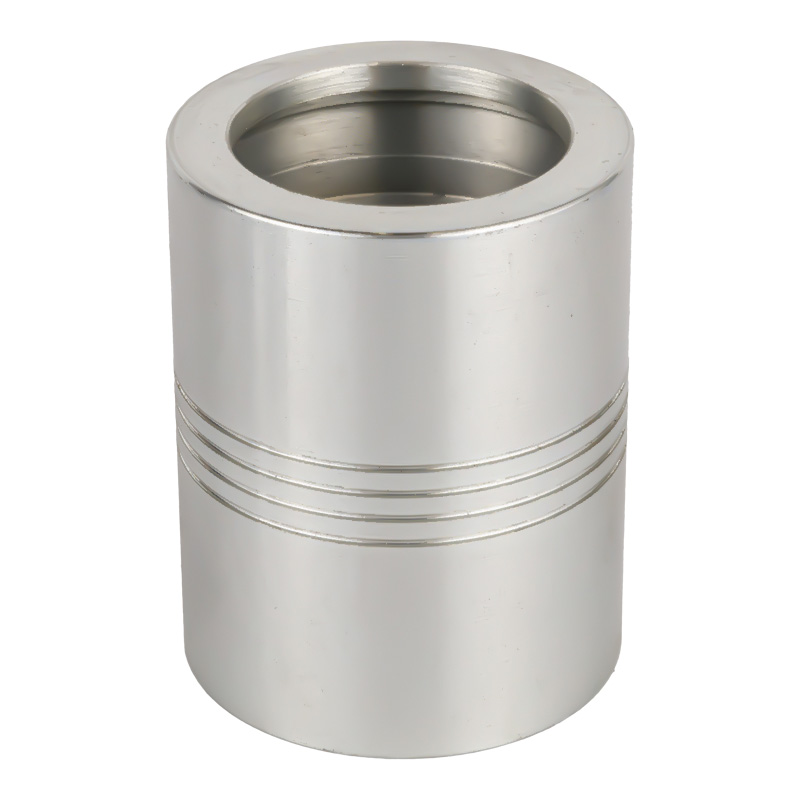Ground equipment hydraulic oil is a very important part of the hydraulic system, which is directly related to the operation and use of the entire system. The oil pipe is an important part to realize the connection between the two, and the oil pipe joint is the key component of the hydraulic system that connects these parts into a whole and can be operated, and it is very important in this hydraulic system. There are many types of joints, and the suitable joints for different systems are different. Different connectors have different installation methods and specific installation steps. Let me introduce to you the installation methods of four commonly used joints in hydraulic system tubing connection:
The first type is a flared pipe joint.The most important thing to install this tubing joint is to control the flaring at the end of the pipe. Otherwise, if the flaring is too large, the sealing effect will be affected, and cracks may even occur. Specifically, the installation of this joint requires everyone to pay attention to the proper tightening torque when tightening the pipe joint nut, and a torque wrench must be used when tightening. The second is to pay attention to the operation once as much as possible. If the red copper pipe is disassembled and then reassembled, be sure to replace the new copper pipe, re-flare and install it again.
To install the flared joint, the bending angle of the pipe must be correct, and the length of the pipe must be moderate, not too long or too short, otherwise the tightness of the flaring cannot be guaranteed and there will be leakage. It is also very important to ensure that the processing quality of the joint must be reliably guaranteed, that all aspects of the joint meet the requirements of use and installation, and promote a sufficiently good assembly effect.
 The second type is a detachable hose connector.
The second type is a detachable hose connector.5—From the fitting number of the steel ball, when assembling this oil pipe joint, you should first clamp the joint jacket 2 on the vise, and screw the end of the rubber tube 1 with the rubber layer stripped into the jacket in the left-hand direction Inside. When it is screwed to the bottom, screw the joint core 3 dipped in lubricating oil into the inner hole of the hose. In the case of avoiding the simultaneous rotation of the hose, the hex nut rotating until the core of the joint contacts the shoulder of the jacket.
The third type is the ferrule type pipe joint.For this kind of joint construction, the first thing is to prepare the pipe. Then there is preparation for installation, and then the pre-installation of the ferrule with the pre-installed joint body that has been quenched. After making the original as required, the final installation is done. The final installation operation is to insert the pipe end that has been pre-installed with the ferrule into the joint body and tighten the nut by hand. Then use an open-end wrench to tighten the nut without a sleeve until the resistance suddenly rises and then continue to tighten the nut 1/4 turn; finally, it will be in the manual pre-installation joint body or the ferrule pre-installation machine Insert the pipe end with the pre-installed ferrule into the joint body, and continue to tighten the nut of this part according to the requirements of the previous step.
The fourth type is high-pressure hose joints.For this type of tubing joint, first pay attention to the hose, whether it is moving or stationary, and the bend should start at least 1.5 times its diameter; secondly, pay attention not to pull the hose when it is moved to an extreme position. Too tight to maintain a relatively loose state; during the entire installation process, do not allow the hose to be twisted and deformed, and keep it away from the heat radiating components, and at the same time prevent the outside of the hose from being damaged. The self-weight of the hose is relatively large, and if it is excessively deformed, it must be supported by supporting parts.
